How to Unwobble a Bicycle Rim
Method 1 of 3:
Fixing a Lateral (Side to Side) Wobble
-
 Flip bike upside down, or put the wobbly wheel in a truing stand if you have one. You need to be able to spin the wheel freely, allowing you to see where it wobbles and make subtle changes. Usually, turning the bike upside down is more than enough, but precise mechanics can use a truing stand, which holds the wheel in place and has small calipers that let you notice even the smallest wobble.
Flip bike upside down, or put the wobbly wheel in a truing stand if you have one. You need to be able to spin the wheel freely, allowing you to see where it wobbles and make subtle changes. Usually, turning the bike upside down is more than enough, but precise mechanics can use a truing stand, which holds the wheel in place and has small calipers that let you notice even the smallest wobble.- If you've got a serious wobble or issue, it can help to take the tire off first. At the very least, take some air out of the tires. If not, one will likely pop while you work.[1]
-
 Locate the bend in the rim by noting where the wheel comes nearer to the brakes. Spin the wheel, watching near the brakes to see where the wheel swings to either side. Either stop the bike at this point with your fingers, noting where it is, or use a permanent marker to measure the wobble. Simply hold the marker evenly at one height, and spin the wheel so that any wobbling are hits the marker and makes a streak.
Locate the bend in the rim by noting where the wheel comes nearer to the brakes. Spin the wheel, watching near the brakes to see where the wheel swings to either side. Either stop the bike at this point with your fingers, noting where it is, or use a permanent marker to measure the wobble. Simply hold the marker evenly at one height, and spin the wheel so that any wobbling are hits the marker and makes a streak.- Looking to protect your beautiful wheels from marks? Take a small piece of masking tape and use it to make the spots where there is some wobble.
-
 Understand how spokes are tightened and turned. The way you tighten spokes seems a little counter-intuitive at first, since you'll be turning spokes on both the top and bottom of the wheel. It seems like it's breaking the "righty-tighty" rule you've grown up with, but there is an easier way to think about it. Imagine you're looking straight down at the top of the spoke where it meets the rim. If you were to take a screwdriver and stick it into the top of the spoke, you would turn the spoke clockwise, like normal, to tighten it, and counter-clockwise to loosen it. If you're ever in doubt, imagine which direction you would turn this screwdriver, and turn accordingly.
Understand how spokes are tightened and turned. The way you tighten spokes seems a little counter-intuitive at first, since you'll be turning spokes on both the top and bottom of the wheel. It seems like it's breaking the "righty-tighty" rule you've grown up with, but there is an easier way to think about it. Imagine you're looking straight down at the top of the spoke where it meets the rim. If you were to take a screwdriver and stick it into the top of the spoke, you would turn the spoke clockwise, like normal, to tighten it, and counter-clockwise to loosen it. If you're ever in doubt, imagine which direction you would turn this screwdriver, and turn accordingly. -
 Grip the spokes around your problem area and squeeze lightly, checking for looseness. If you're not sure what "loose" is, feel your other wheel or the spokes on other sides of the wheel. While not all wobbly wheels have noticeably loose spokes, most do, which will point out the exact spoke where there is an issue. If a spoke is extremely loose, tighten it until it is about the same tension as those around it.
Grip the spokes around your problem area and squeeze lightly, checking for looseness. If you're not sure what "loose" is, feel your other wheel or the spokes on other sides of the wheel. While not all wobbly wheels have noticeably loose spokes, most do, which will point out the exact spoke where there is an issue. If a spoke is extremely loose, tighten it until it is about the same tension as those around it.- If a spoke is extremely loose, you should still go ahead and try to fix it. That said, you may need a new rim if this happens regularly-- it should be a rare occurrence.[2]
- There are rare cases where a spoke feels too tense, which can cause a wobble as well. The technique to fix it (shown below) is the exact same, just with loosening instead of tightening.
-
 Note which side each spoke pulls towards to find the ones causing your wobble. The spokes will alternate which side of the rim they go to -- half to the left, half to the right. The balance between these two sides is what keeps your wheel true and prevents wobble. So, if your wheel wobbles to the left, that means the spokes on the right side are too loose to keep things balanced, or the spokes on the left are too tight. This is why you only get wobbles in certain areas -- one spoke that is too loose only affects the wheel in the precise spot.
Note which side each spoke pulls towards to find the ones causing your wobble. The spokes will alternate which side of the rim they go to -- half to the left, half to the right. The balance between these two sides is what keeps your wheel true and prevents wobble. So, if your wheel wobbles to the left, that means the spokes on the right side are too loose to keep things balanced, or the spokes on the left are too tight. This is why you only get wobbles in certain areas -- one spoke that is too loose only affects the wheel in the precise spot.- Trace the spoke down from the rim down to the center of the wheel to see which side it pulls towards.[3]
-
 Tighten the spoke just below your problem area with a half-turn of the nipple. The golden rule of rim truing is go slow. Using your spoke wrench, a small tool with notches made to fit perfectly around the "nipple," the small sheath where the spoke meets the rim. Tighten it with a half-turn clockwise, then check again. Remember -- go slowly! This first turn won't fix the issue immediately, but don't keep turning just yet.
Tighten the spoke just below your problem area with a half-turn of the nipple. The golden rule of rim truing is go slow. Using your spoke wrench, a small tool with notches made to fit perfectly around the "nipple," the small sheath where the spoke meets the rim. Tighten it with a half-turn clockwise, then check again. Remember -- go slowly! This first turn won't fix the issue immediately, but don't keep turning just yet.- Don't have a spoke wrench? A pair of needle-nose pliers will work in a pinch, but you should buy a spoke wrench cheaply as soon as you can.
- Remember to get the right side! If the wobble is to the left, you need to tighten the spoke that pulls the rim back to the right.[4]
-
 Loosen the two spokes next to the one you just tightened, using only quarter-turns. This is how you keep the radial tension (up and down the rim, keeping it perfectly round) even without too much work. Say you just tightened a spoke on the right side of the rim, because it wobbled to the left. On either side of this spoke are two more spokes for the left side of the rim. Instead of continuing to crank on the right side, which can put too much pressure on one spoke, just loosen the spokes that pull it to the left. By using just a quarter turn on each spoke, you undo the same amount of tension on the left that you just added to the right, further balancing your wheel.
Loosen the two spokes next to the one you just tightened, using only quarter-turns. This is how you keep the radial tension (up and down the rim, keeping it perfectly round) even without too much work. Say you just tightened a spoke on the right side of the rim, because it wobbled to the left. On either side of this spoke are two more spokes for the left side of the rim. Instead of continuing to crank on the right side, which can put too much pressure on one spoke, just loosen the spokes that pull it to the left. By using just a quarter turn on each spoke, you undo the same amount of tension on the left that you just added to the right, further balancing your wheel.- Keep this simple math equation in your head as you work -- "if I tighten one spoke, I need to loosen the two spokes next to it half as much to make sure it stays balanced." The opposite equation, loosening one spoke and then tightening the other two half as much, also applies.
-
 Spin the wheel and check the truing. After every set of adjustments, spin the wheel and check your work. You should be keeping an eye on the wheel frequently -- don't just blindly tighten the spokes without seeing if you're making any progress.
Spin the wheel and check the truing. After every set of adjustments, spin the wheel and check your work. You should be keeping an eye on the wheel frequently -- don't just blindly tighten the spokes without seeing if you're making any progress. -
 Continue this 3-spoke adjustment process until the wobble is gone. You may need to take another set of three spokes and do the same thing. Just remember to keep the forces even, balancing out every adjustment on both sides. Never turn more than a half-turn at a time, and only work on one set of spokes at a time, allowing your to quickly undo something if you make a mistake.
Continue this 3-spoke adjustment process until the wobble is gone. You may need to take another set of three spokes and do the same thing. Just remember to keep the forces even, balancing out every adjustment on both sides. Never turn more than a half-turn at a time, and only work on one set of spokes at a time, allowing your to quickly undo something if you make a mistake.- You will likely get smaller and smaller adjustments as you work -- using only turning the nipple by small increments. At this point, you should be spinning the wheel after every tightening, making only the smallest adjustments until you hit perfection.[5]
-
 Check for "flat spot" wobbles, or a bike that is not "radially" true. The most common issue is when the rim wobbles left to right, but bike tires can also wobble up and down as well, forming egg-shaped wheels or small flat spots where the tension isn't quite right up and down. After fixing the rim from side to side, make sure you didn't accidentally pull the wheel out of radial true as well. Usually, you'll have a few simple adjustments to make, but they should be easy.[6]
Check for "flat spot" wobbles, or a bike that is not "radially" true. The most common issue is when the rim wobbles left to right, but bike tires can also wobble up and down as well, forming egg-shaped wheels or small flat spots where the tension isn't quite right up and down. After fixing the rim from side to side, make sure you didn't accidentally pull the wheel out of radial true as well. Usually, you'll have a few simple adjustments to make, but they should be easy.[6]
Method 2 of 3:
Fixing Radial (Up and Down) Wobbling
-
 Check that the bike is laterally trued first, as best as you can get it. You'll always want to finish laterally truing the bike before attacking a radial wobble. Radial wobbling is when the bicycle rim loses its perfectly round shape, and you can usually feel a little bump when riding. This has more to do with the overall tension on the bike and is easier to fix once you've got side-to-side areas ironed out.
Check that the bike is laterally trued first, as best as you can get it. You'll always want to finish laterally truing the bike before attacking a radial wobble. Radial wobbling is when the bicycle rim loses its perfectly round shape, and you can usually feel a little bump when riding. This has more to do with the overall tension on the bike and is easier to fix once you've got side-to-side areas ironed out. -
 Spin the rim and watch it from the side, noting any high spots using calipers or your fingers. Spin the bike and place your finger, a marker, or a set of calipers underneath the wheel, just below where it would touch the tire. Then spin the wheel and note where it rubs against the caliper. This is where the rim has elongated, and you'll need to pull it in to get this bump out of the rim.[7]
Spin the rim and watch it from the side, noting any high spots using calipers or your fingers. Spin the bike and place your finger, a marker, or a set of calipers underneath the wheel, just below where it would touch the tire. Then spin the wheel and note where it rubs against the caliper. This is where the rim has elongated, and you'll need to pull it in to get this bump out of the rim.[7] -
 Tighten the two spokes that are on either side of the rubbing area with a half turn. One of these spokes will go to the right side of the bike, the other to the left, so tightening them both equally will pull the high spot in without ruing your radial truing.
Tighten the two spokes that are on either side of the rubbing area with a half turn. One of these spokes will go to the right side of the bike, the other to the left, so tightening them both equally will pull the high spot in without ruing your radial truing. -
 Move the calipers, pen, or your finger closer in, spin the wheel, and adjust as needed. Keep working these two spokes until you've pulled the rub out of the rim, using smaller and smaller are turns (like a quarter-turn) to get more precise truing.
Move the calipers, pen, or your finger closer in, spin the wheel, and adjust as needed. Keep working these two spokes until you've pulled the rub out of the rim, using smaller and smaller are turns (like a quarter-turn) to get more precise truing.- After every set of turns, spin the wheel and double-check the lateral truing again, making sure you've not introduced a new wobble.[8]
-
 Check that parts of the wheel don't dive inwards now, making flat spots, and loosen as necessary. This often happens on the opposite side of the wheel as the part you're working on, but it is an easy fix. Just find the two spokes on either side of your low spot and loosen them with quarter turns until you're even again.[9]
Check that parts of the wheel don't dive inwards now, making flat spots, and loosen as necessary. This often happens on the opposite side of the wheel as the part you're working on, but it is an easy fix. Just find the two spokes on either side of your low spot and loosen them with quarter turns until you're even again.[9]
Method 3 of 3:
Troubleshooting
-
 Know when a rim is damaged and not simply out of true. If your wheel can't stay in true, shows noticeable bending or denting, or your spokes won't stay tight, you'll need a new wheel. Oftentimes you'll need to true a wheel after a crash, which can loosen spokes, but it is not always possible. If you find yourself working and working without results, the rim is likely shot.[10]
Know when a rim is damaged and not simply out of true. If your wheel can't stay in true, shows noticeable bending or denting, or your spokes won't stay tight, you'll need a new wheel. Oftentimes you'll need to true a wheel after a crash, which can loosen spokes, but it is not always possible. If you find yourself working and working without results, the rim is likely shot.[10] -
 Tighten any extra-loose spokes until they feel as tense as the rest, then make the finer adjustments. The half turn, two quarter turn system won't work if the spoke is noticeably looser than the rest. Simply tighten this spoke on its own until it feels about as tight as the spokes around it, then move on to the more precise adjustments.
Tighten any extra-loose spokes until they feel as tense as the rest, then make the finer adjustments. The half turn, two quarter turn system won't work if the spoke is noticeably looser than the rest. Simply tighten this spoke on its own until it feels about as tight as the spokes around it, then move on to the more precise adjustments. -
 Make sure the wheel is seated perfectly and the brakes are even if you can't seem to true the bike. Is the rim really out of true, or do you not have the wheel in the frame properly? The best way to ensure this is to release the wheel as if you were about to take it off the bike. Then squeeze the brakes to hold the bike in the center of the frame. Re-tighten the wheel into the frame and then let go of the brakes, leaving the wheel in the dead center.
Make sure the wheel is seated perfectly and the brakes are even if you can't seem to true the bike. Is the rim really out of true, or do you not have the wheel in the frame properly? The best way to ensure this is to release the wheel as if you were about to take it off the bike. Then squeeze the brakes to hold the bike in the center of the frame. Re-tighten the wheel into the frame and then let go of the brakes, leaving the wheel in the dead center. -
 Replace any broken spokes as soon as you can, as one broken spoke often leads to more. When you lose a spoke, you can keep riding for a bit if you have not other option to get home. But the increased pressure on the other spokes will warp and bend your wheel if left for too long, eventually causing more spokes to break and potentially ruining your rim permanently.[11]
Replace any broken spokes as soon as you can, as one broken spoke often leads to more. When you lose a spoke, you can keep riding for a bit if you have not other option to get home. But the increased pressure on the other spokes will warp and bend your wheel if left for too long, eventually causing more spokes to break and potentially ruining your rim permanently.[11]
5 ★ | 1 Vote
You should read it
- Instructions for making steering wheel with carton cover to play racing games
- Windows operating system: Exploiting scrolling function
- Why are train wheels more like a cone than a regular circle?
- Surf the web more effectively with the mouse wheel
- How to Drift a Car
- The Eee PC mouse wheel receives a 2-finger signal at once
- How to Replace Bearings on a Trailer
- How to Steer Your Car
May be interested
- How to Countersteer (Motorcycle)
 the basic mechanics of countersteering are performed by every kid who's ever ridden a bicycle. you're already doing it if you're riding a motorcycle. at higher motorcycle speeds, however, it's important to have a basic understanding of the...
the basic mechanics of countersteering are performed by every kid who's ever ridden a bicycle. you're already doing it if you're riding a motorcycle. at higher motorcycle speeds, however, it's important to have a basic understanding of the... - Roll 7 common cycling injuries
 bicycle injuries are almost always encountered. although less common than other sports, practitioners may still face dull or worse pain.
bicycle injuries are almost always encountered. although less common than other sports, practitioners may still face dull or worse pain. - How to Ride a Bicycle in Traffic
 cycling in traffic can feel dangerous, but it can be fairly safe if you follow the rules. make sure to obey traffic laws while riding and take steps to keep your full attention on the road. in addition, protect yourself with gear like...
cycling in traffic can feel dangerous, but it can be fairly safe if you follow the rules. make sure to obey traffic laws while riding and take steps to keep your full attention on the road. in addition, protect yourself with gear like... - How to Drift on a Bicycle
 drifting—also known as skidding when you're doing it on a bike—is a technique where you approach a corner on your bike at a high speed and move around the turn as your back tire loses traction with the ground. to successfully skid around a ...
drifting—also known as skidding when you're doing it on a bike—is a technique where you approach a corner on your bike at a high speed and move around the turn as your back tire loses traction with the ground. to successfully skid around a ... - It's now possible to buy metal bike tires that remember NASA's shape!
 the metl bicycle tire is the first consumer product to use nitinol, a shape memory alloy developed by nasa, made from nickel and titanium.
the metl bicycle tire is the first consumer product to use nitinol, a shape memory alloy developed by nasa, made from nickel and titanium. - 6 historical facts that surprise you
 here are 6 unexpected historical facts that can cause you to completely lose the concept of time.
here are 6 unexpected historical facts that can cause you to completely lose the concept of time. - Series of funny horizontal moments, watching for fun, not trying to explain
 watch it for fun, don't try to explain it because life has it all.
watch it for fun, don't try to explain it because life has it all. - How to Ship a Bicycle Cheaply
 instead of paying a lot of money for inefficient shipping, you should investigate ways to reduce your costs when you want to send a bike to a different location. one of the biggest factors in reducing your bike shipping costs is minimizing...
instead of paying a lot of money for inefficient shipping, you should investigate ways to reduce your costs when you want to send a bike to a different location. one of the biggest factors in reducing your bike shipping costs is minimizing... - Electric bicycles are so powerful that they can pull cars
 with a sturdy structure and extremely powerful engine, this electric bike has remarkable power, can pull a 4-seater car.
with a sturdy structure and extremely powerful engine, this electric bike has remarkable power, can pull a 4-seater car. - How to Use Divvy Bikes in Chicago
 using chicago's bicycle sharing system can be a convenient way to get around. a pass will work for 24 hours, but you must check the bike in every thirty minutes, so divvy is best for shorter trips. find the closest divvy station to your...
using chicago's bicycle sharing system can be a convenient way to get around. a pass will work for 24 hours, but you must check the bike in every thirty minutes, so divvy is best for shorter trips. find the closest divvy station to your...
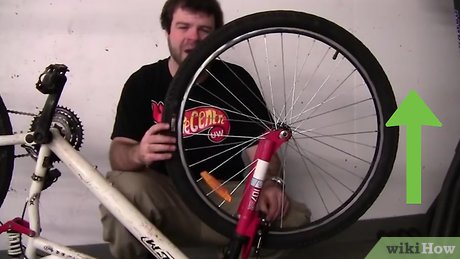



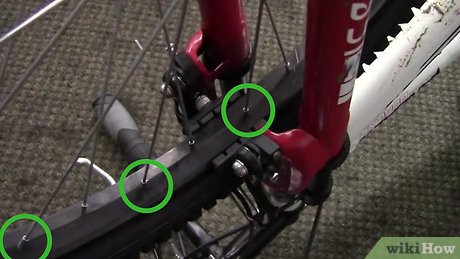

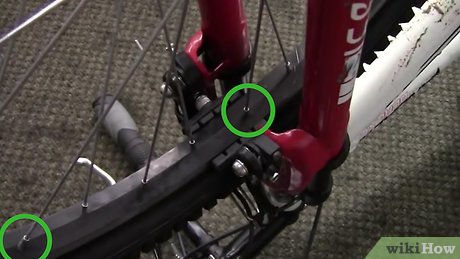

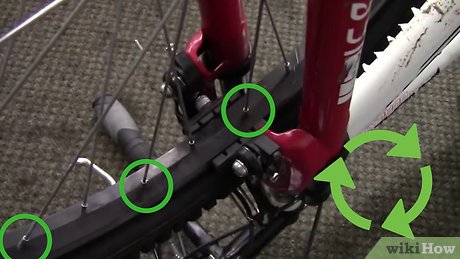
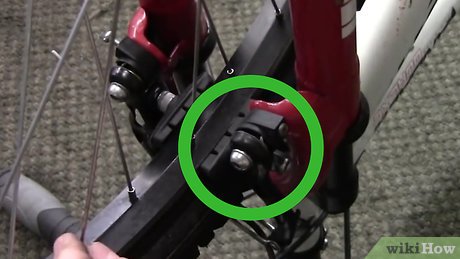
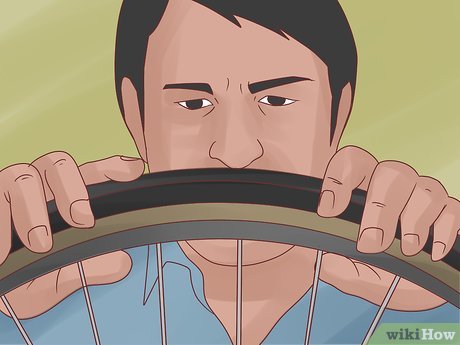
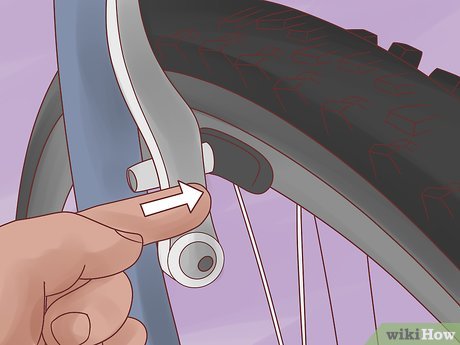
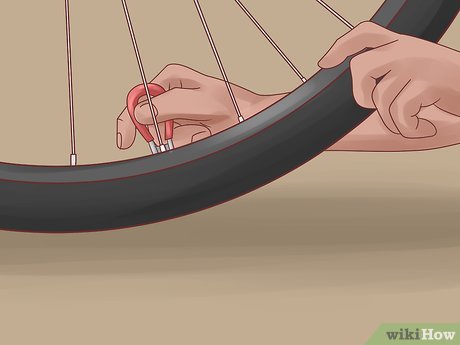
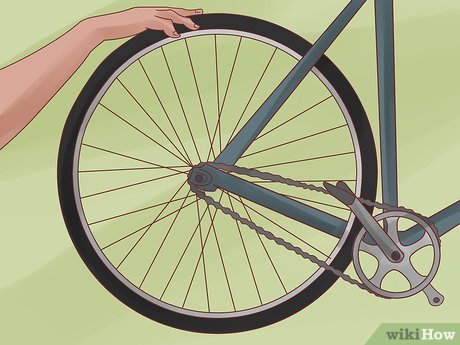
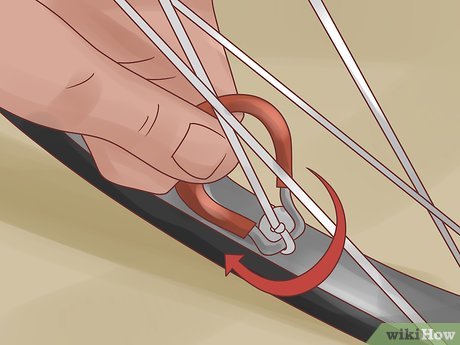
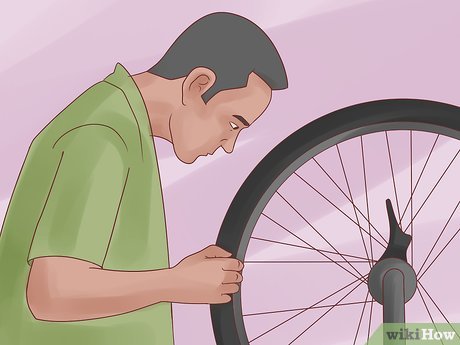
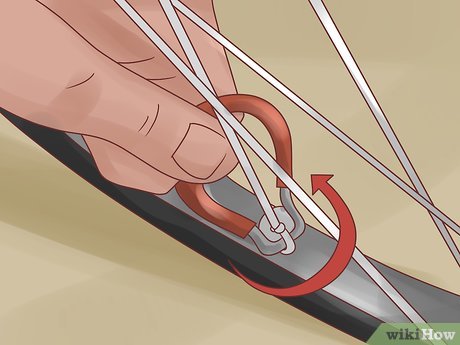
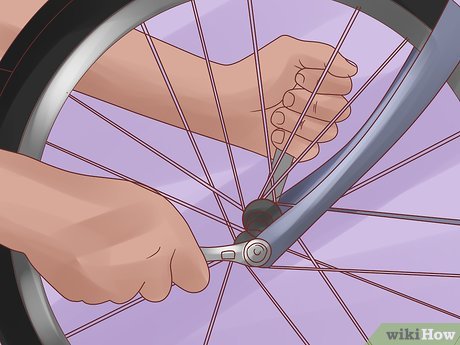
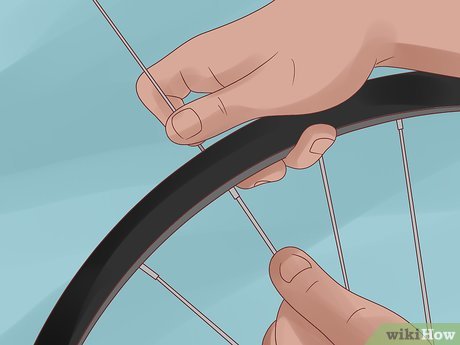

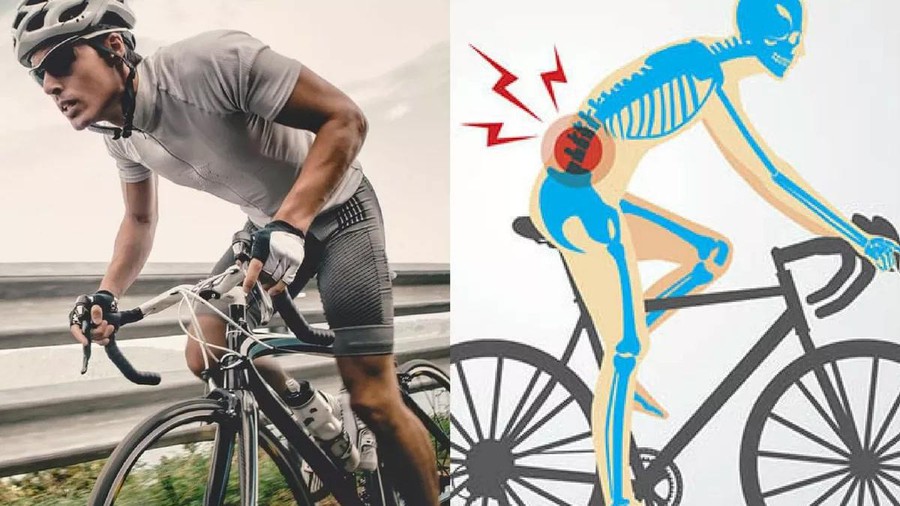








 How to Use Jack Stands
How to Use Jack Stands How to Drive Long Distances Alone
How to Drive Long Distances Alone How to Do Donuts
How to Do Donuts How to Wash Your Bike
How to Wash Your Bike How to Register a Utility Trailer
How to Register a Utility Trailer How to Make Right, Left, and U Turns
How to Make Right, Left, and U Turns